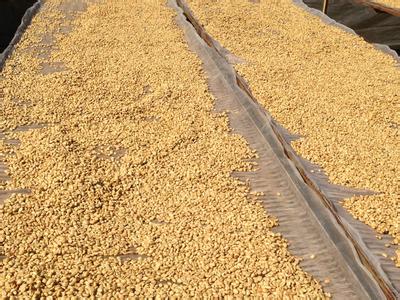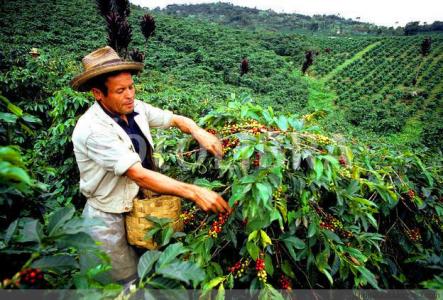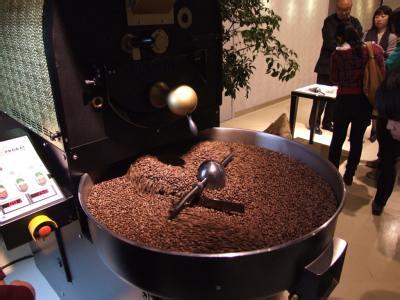A brief introduction to the taste treatment method of price and flavor description of Arakabi coffee beans
A brief introduction to the taste treatment method of price and flavor description of Arakabi coffee beans
Coffee made from Arabica beans is of higher quality and tastes different than other commercially grown coffee varieties (such as Robusta), and the coffee contains less caffeine. The traditional processing method is to harvest coffee berries manually, peel them on the same day, and use manually selected coffee beans to be ground and boiled after baking. With fresh milk, do not use the cream on the market, so the coffee is particularly smooth and full-bodied
Small-grain coffee is still the most important coffee variety, accounting for about 3% of the world's total coffee production. It is mainly grown in Latin American countries, but also partly in Indonesia and the Pacific islands. The geographical and climatic conditions of Brazil, the largest coffee producer in the world, are very suitable for the growth of small-grain coffee, and the main coffee varieties planted are also small-grain coffee. Brazil's coffee production accounts for more than 1 / 3 of the world's total output.
"Typica" iron pickup, the name sounds majestic, but in fact it is not so strong. It has weak physique, poor disease resistance, easy to catch rust leaf disease and less fruit yield. It is one of the oldest native varieties in Ethiopia, and many Arabica are derived from iron pickups!
The parietal leaf of the iron pickup is bronzed, and the bean grain is large, pointed, oval or thin. Everyone is familiar with the well-known Mantenin, Blue Mountain, Elephant Bean, Kona, Yunnan Dou …... Wait. They are all derived from iron pickups.
The planting conditions of "Arabica" coffee are relatively stringent, requiring higher elevations (6 to 2000 meters above sea level), fertile soil fertility, adequate moisture, proper sunshine conditions and shade. "Arabica" coffee species are less resistant to diseases and insect pests and are vulnerable to damage. In addition, the annual output of coffee trees per unit area is also lower.

Important Notice :
前街咖啡 FrontStreet Coffee has moved to new addredd:
FrontStreet Coffee Address: 315,Donghua East Road,GuangZhou
Tel:020 38364473
- Prev

A brief introduction to the flavor description of coffee beans treated with Columbia Huilan nectar
In the eyes of many coffee drinkers in the country, Huilan seems to represent Colombian high-quality coffee. Huilan, or Huila, is one of the important coffee producing areas in Colombia. Some bean merchants translate into Huilan or Huilan, or Uila Ulahura, is actually the same thing, that is, the transliteration of Huila. Hui
- Next

Grinding scale of Ethiopian Sidamo Coffee Bean by Variety and Flavor description
Variety and flavor description of Ethiopian Ethiopia Sidamo coffee beans Grinding scale Ethiopia Sidamo G2 (Sidamo G2): the Sidamo producing area is located in the south of Ethiopia, extending to the administrative regions of Arsi and Bale in the east and Gamogofa in the west. Sidamo coffee is cultivated at altitude 1400m-2000m. Agriculture is the main industry here.
Related
- Detailed explanation of Jadeite planting Land in Panamanian Jadeite Manor introduction to the grading system of Jadeite competitive bidding, Red bid, Green bid and Rose Summer
- Story of Coffee planting in Brenka region of Costa Rica Stonehenge Manor anaerobic heavy honey treatment of flavor mouth
- What's on the barrel of Blue Mountain Coffee beans?
- Can American coffee also pull flowers? How to use hot American style to pull out a good-looking pattern?
- Can you make a cold extract with coffee beans? What is the right proportion for cold-extracted coffee formula?
- Indonesian PWN Gold Mandrine Coffee Origin Features Flavor How to Chong? Mandolin coffee is American.
- A brief introduction to the flavor characteristics of Brazilian yellow bourbon coffee beans
- What is the effect of different water quality on the flavor of cold-extracted coffee? What kind of water is best for brewing coffee?
- Why do you think of Rose Summer whenever you mention Panamanian coffee?
- Introduction to the characteristics of authentic blue mountain coffee bean producing areas? What is the CIB Coffee Authority in Jamaica?

